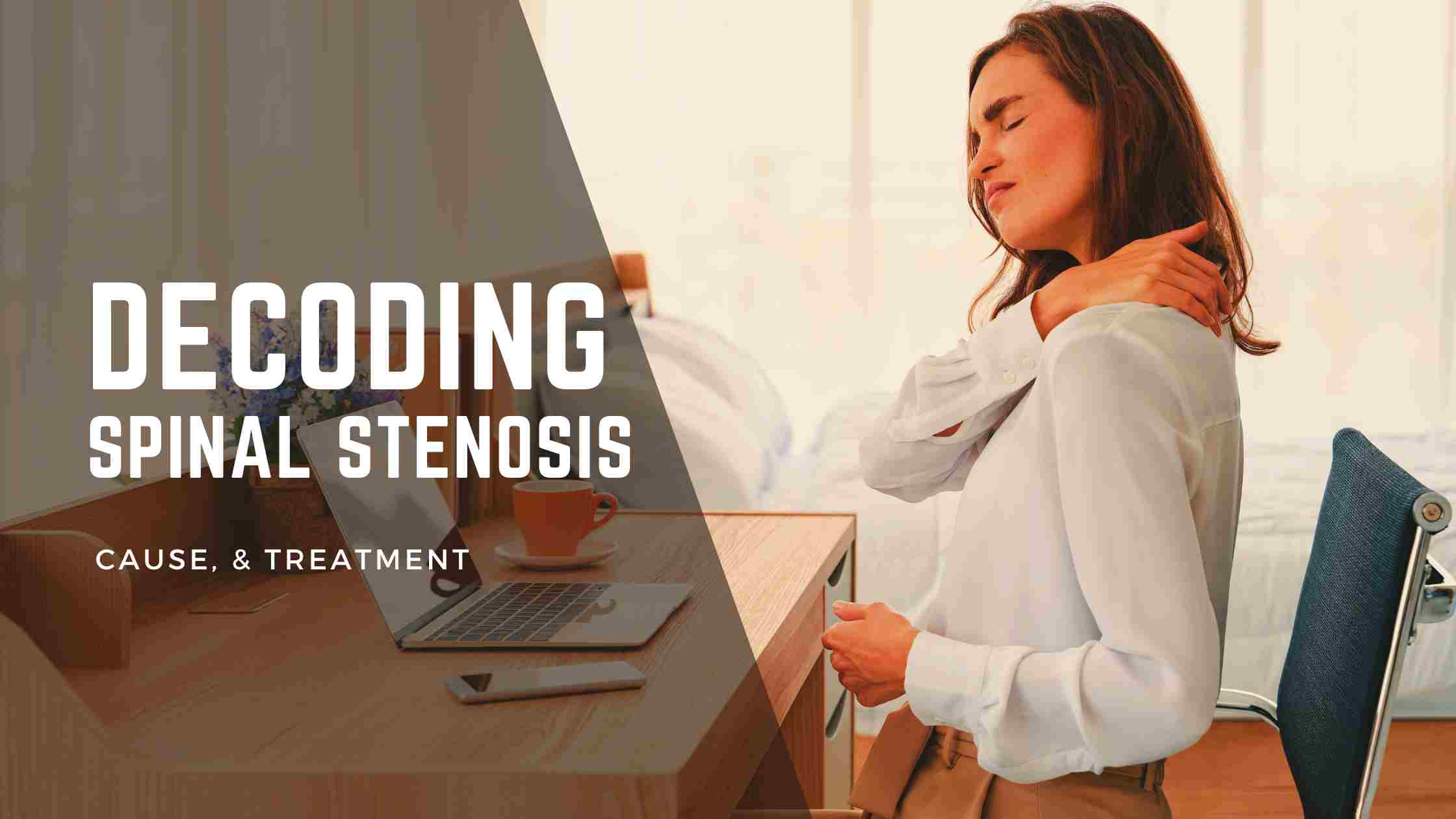Introduction
Spinal stenosis, including its variants like spinal canal stenosis and cervical stenosis, is a condition that can significantly impact your spinal health and overall well-being. This blog provides an in-depth look at spinal stenosis, its symptoms, causes, and various treatment options.
What is Spinal Stenosis?

Spinal stenosis(spinal s), including specific types like cervical neck stenosis and lumbar spondylosis, occurs when the spaces within your spine narrow, putting pressure on the nerves traveling through the spine. This condition is often seen in the lower back and neck.
Symptoms of Spinal Stenosis
Symptoms vary based on the type of stenosis and may include:
- Numbness or tingling in a hand, arm, foot, or leg
- Weakness in these areas
- Problems with walking and balance
- Neck pain, often seen in cervical stenosis
- In severe cases, bowel or bladder dysfunction
Causes of Spinal Stenosis
Common causes of spinal stenosis, including lumbar spondylosis and slipped disc disease, are:
- Wear-and-tear changes in the spine related to osteoarthritis
- Herniated disks, often referred to as slipped disc disease
- Thickened ligaments
- Spinal injuries
- Tumors within the spinal cord
Treatment Options for Spinal Stenosis
Effective management of spinal s, including conditions like cervical neck stenosis and lumbar spondylosis, involves a multifaceted approach tailored to the individual’s specific symptoms and overall health. Here’s a more detailed look at the available treatments:
Medications
- Pain Relievers: Over-the-counter pain relievers such as ibuprofen or acetaminophen are often recommended for managing mild to moderate back pain associated with stenosis. For more severe pain, stronger prescription medications may be necessary.
- Anti-Seizure Drugs: Medications commonly used to control seizures can be effective in reducing pain caused by damaged nerves. These can be particularly helpful for symptoms like the radiating pain often seen in cases of cervical stenosis.
- Antidepressants: Certain antidepressants have been found to offer relief from chronic pain. These medications can help improve sleep and alleviate pain associated with spinal stenosis.
- Opioids: In cases of severe pain, opioids may be prescribed for short-term relief. However, due to their addictive nature, they are used with caution and under strict medical supervision.
Physical Therapy
Physical therapy is a cornerstone of treatment for spinal stenosis. It can help:
- Strengthen the muscles that support your spine, which can reduce the load on your spinal column.
- Improve flexibility and range of motion.
- Teach body mechanics and posture awareness to relieve symptoms of spinal stenosis, including back pain.
- Educate on exercises that can be done at home to maintain spinal health and alleviate symptoms.
Steroid Injections
Corticosteroid injections can be administered into the area around the spinal nerves to reduce inflammation and pain. While these injections can provide temporary relief, they are generally not recommended as a long-term solution due to potential side effects with frequent use.
Surgery
Surgery may be considered in cases where other treatments have failed and the patient is experiencing severe symptoms that interfere with daily activities. Surgical options include:
- Laminectomy: This procedure involves removing parts of the bone, bone spurs, or ligaments in your back to relieve pressure on spinal nerves. It’s commonly performed in cases of severe spinal canal stenosis.
- Foraminotomy: This surgery helps to widen the area where nerve roots exit the spinal column, which can be beneficial in conditions like cervical neck stenosis.
- Spinal Fusion: In cases where spinal s is accompanied by instability in the spine, such as with slipped disc disease, spinal fusion may be recommended. This procedure involves connecting two or more vertebrae in the spine to provide stability.
Managing Spinal Stenosis
Managing it involves lifestyle adjustments to relieve symptoms like back pain and maintain spinal health. Regular exercise, weight management, and good posture are key.
Conclusion
While conditions like spinal canal stenosis, cervical stenosis, and lumbar spondylosis pose challenges, they can be managed effectively with appropriate treatment and lifestyle changes. Always consult with your healthcare provider for personalized advice.
FAQs on Spinal Stenosis
Q: How is cervical neck stenosis different from lumbar spondylosis? A: Cervical neck stenosis affects the neck region, while lumbar spondylosis affects the lower back.
Q: Can exercises help with back pain caused by spinal stenosis? A: Yes, specific exercises can alleviate back pain and improve spinal health.
Q: Is slipped disc disease related to spinal stenosis? A: Yes, a slipped disc or herniated disc can contribute to the development of spinal s.
